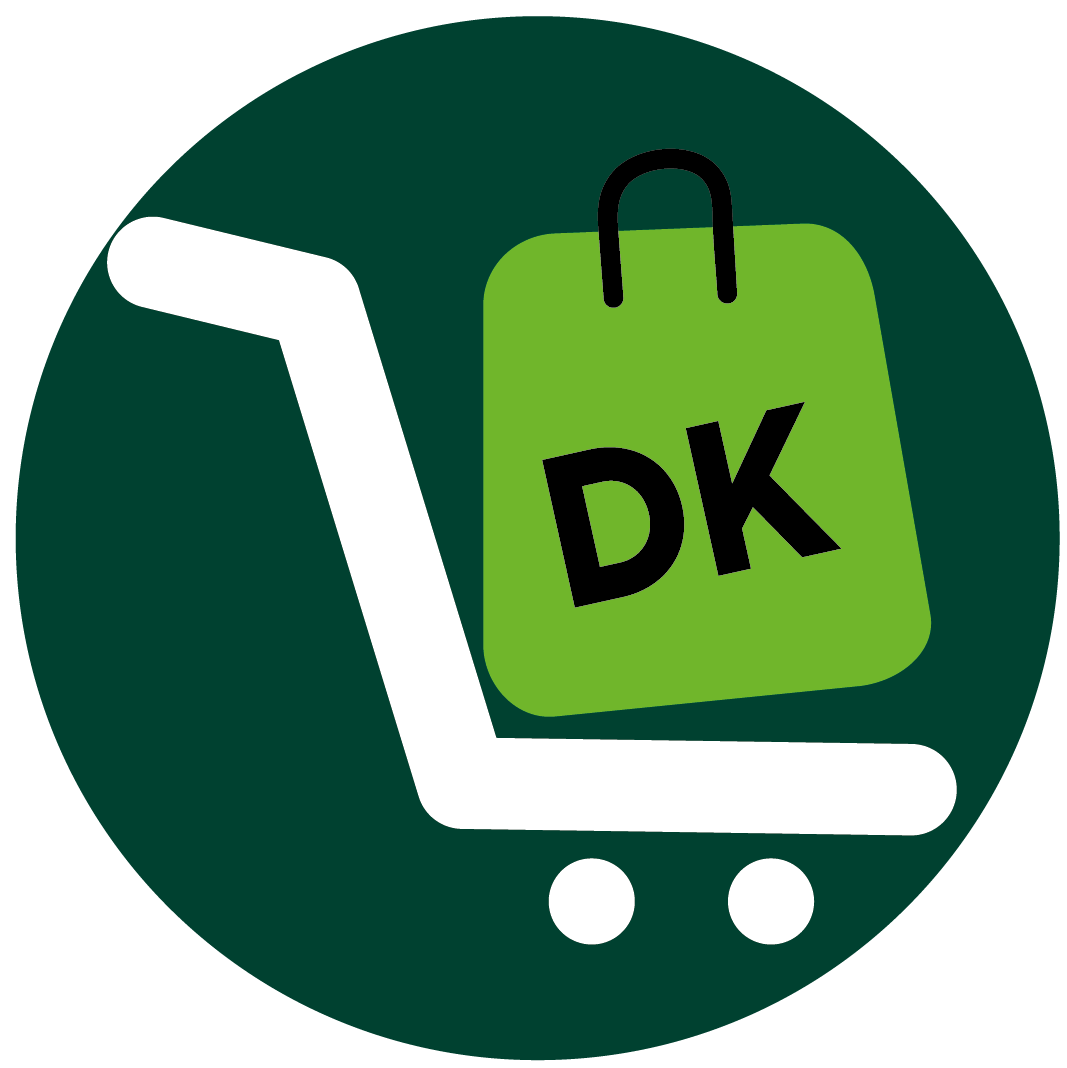With the rise of e-commerce, the modern business landscape has been more accessible than ever before, and the attraction of entrepreneurship is stronger than ever. An internet store provides a venue where ideas can meet business, and physical distance is irrelevant. Your passion can find an audience and your products or services can shine in this realm. Launching an online store is an exciting adventure that offers development, difficulties, and the chance for significant rewards, regardless of your level of experience as an entrepreneur or a young business owner.
An online store is a website or an app that allows you to sell your products or services to customers around the world. Whether you want to sell handmade crafts, digital courses, or professional services, an online store can help you reach a larger and more diverse market, increase your sales, and grow your brand. There is a huge potential and opportunity to start an online store in the digital age. Find in this guide simple steps to start your online store.
To start an online store:
1. Choose a Niche And a Target Audience
2. Choose Your Products Or Services
3. Choose an E-commerce Platform And a Domain Name
4. Design Your Brand And Your Website
5. Set Up Your Payment And Shipping Methods
6. Launch Your Online Store And Promote It
Ready to learn? Let’s dive in!
1. Choose a Niche And a Target Audience
To start an online store, select a niche and target audience for your online store. This is one of the most important decisions you need to make at the inception. A niche is a specific segment of a market that you focus on, while a target audience is a group of people who are most likely to buy your products or services. But how do you choose a niche and a target audience for your online store? Here are some steps and tips to help you:
Step 1: Brainstorm your passions and skills
The first step is to brainstorm a list of your passions and skills. What do you have an interest in, knowledge about, or good at? What do you enjoy doing, learning, or sharing? What are your hobbies, talents, or expertise? Write down as many ideas as possible, and don’t limit yourself by what you think is popular or profitable. The goal is to find a niche that matches your passion and skills so that you can create products or services that you love and are proud of.
Step 2: Research the market and the competition
The next step is to research the market and the competition for each of your ideas. You need to find out if there is enough demand and potential for your niche, and the saturation or competition. Use tools like Google Trends, Keyword Planner, or Amazon Best Sellers to see how popular and profitable your niche is, and how many people are searching for it. You can also browse online forums, blogs, social media, or online stores to see what kind of products or services are already available, and what kind of feedback or reviews they get. The goal is to find a niche that has a high demand and low competition, or a unique angle or value proposition that sets you apart from the rest.
Step 3: Identify and understand your ideal customers
The final step is to identify and understand your ideal customers. You need to know who they are, what they want, and how you can help them. You can create a customer persona, which is a fictional representation of your ideal customer, based on data and research. You can use tools like SurveyMonkey, Google Forms, or Facebook Audience Insights to collect information about your potential customers, such as their demographics, psychographics, behaviors, and preferences. You can also interact with them directly, by asking questions, conducting interviews, or joining online communities. The goal is to find a target audience who have interest in and are willing to pay for your products or services, and that you can connect with and serve effectively.
2. Choose Your Products Or Services.
To begin an online store, choose your products or services for your Online Store. This is one of the most exciting and challenging aspects of starting an online store. Your products or services are what you offer to your customers, and what sets you apart from other online stores.
To make this choice effectively:
Decide what type of products or services you want to sell
There are different types of products or services you can offer, such as physical products, digital products, subscription-based products or services, service-based products or services
Source, create, or curate your products or services
Depending on the type of product or service you choose, you have different options to obtain or produce them, such as sourcing, creating, curating, and more. Consider the feasibility, profitability, and quality of each option, and choose the one that works best for your online store.
Price your products or services competitively
Pricing is one of the most important and difficult decisions you need to make for your online store, as it affects your revenue, profit, and customer perception. Pricing your products or services too high or too low can hurt your sales and reputation. You need to find the optimal price that reflects the value of your products or services, covers your costs, and attracts your customers. You can use different pricing strategies, such as cost-based pricing, value-based pricing, and competition-based pricing. Analyze the costs, value, and competition of your products or services, and choose the pricing strategy that fits your online store best.
3. Choose an E-commerce Platform And a Domain Name.
To start an online venture, decide on an ecommerce platform and a domain name. An e-commerce platform is a software or a service that allows you to create, manage, and run your online store. A domain name is a unique and memorable web address that identifies your online store on the internet.
To make this selection:
- Compare different ecommerce platforms. Consider several factors such as ease of use, functionality, scalability, security, cost, and more.
- Choose a catchy and memorable domain name that reflects your brand and niche. A domain name is more than just a web address, it is also a marketing tool that can help you attract and retain customers.
>>>PRO TIPS – How to Build an Online Brand
4. Design Your Brand And Your Website
To start an online store, one of the most creative and fun aspects to do is designing your brand and your website. Your brand is the personality and identity of your online store, while your website is the visual and functional representation of your online store.
Here is what to do:
- Create a logo, a color scheme, and a tone of voice for your brand. These are the basic elements that define your brand’s identity and personality and convey your online store’s message and emotion.
- Design your website using templates, themes, or customizations. Your website is the online storefront of your online store, and it should be attractive, functional, and easy to use.
- Make your website user-friendly, mobile-responsive, and SEO-optimized. This way your website will be easy to navigate, fast to load, and compatible with different devices and browsers.
5. Set Up Your Payment And Shipping Methods
To commence an online store, set up your payment and shipping methods. Your payment and shipping methods are how you collect money from your customers and deliver your products or services to them.
To achieve this feat:
- Connect your online store to a payment gateway. There are many payment gateways available in the market, such as PayPal, Stripe, or Square, each with its features, benefits, and drawbacks.
- Choose your shipping strategy, which is how you calculate and charge your customers for the delivery of your products or services. You need to consider your online store’s niche, target audience, and goals when choosing your shipping strategy, and make sure it balances your shipping costs and your customer expectations.
- Handle taxes, customs, and returns, which are the additional fees and processes that may apply to your online store.
>>>GET SMARTER – How to Start a Woocommerce Online Store
6. Launch Your Online Store And Promote It
To set up an online store, launch and promote your online store to turn your online store idea into reality. This requires that you:
Test your online store before launching it
Before you launch your online store, you need to test it thoroughly and rigorously and fix any errors or issues that may affect its functionality, usability, or performance. Testing your online store helps you ensure that your online store works properly and smoothly on different devices, browsers, and platforms, identify and eliminate any bugs, glitches, or errors that may cause your online store to crash, freeze, or malfunction, optimize your online store’s speed, security, and SEO, improve your online store’s design, layout, and content, and enhance your online store’s user experience and customer satisfaction.
Fix any errors or issues
If you find any errors or issues during your testing, you need to fix them as soon as possible and retest your online store to make sure they are resolved. Fixing errors or issues can help you prevent any negative impacts on your online store’s functionality, usability, or performance, avoid any customer complaints or dissatisfaction, and improve your online store’s quality and reliability.
Promote your online store using different channels
After you launch your online store, you need to promote it using different channels, such as social media, email, SEO, ads, etc. Promoting your online store helps you reach and attract your target audience and customers, communicate your online store’s value proposition and benefits, drive more traffic and conversions to your online store, increase your online store’s awareness and visibility, and build your online store’s reputation and credibility.
Measure your performance and results
Your performance and results are the outcomes and impacts of your online store’s launch and promotion. Measuring your performance and results can help you track and analyze your online store’s traffic, conversions, and revenue, evaluate and improve your online store’s functionality, usability, and performance, assess and optimize your online store’s marketing efforts and budget, learn and understand your online store’s audience and customers, identify and leverage your online store’s strengths and opportunities, and make informed and data-driven decisions for your online store.
Recap
To launch an online store, you must first select a specialty and a target market, then choose your goods or services, an e-commerce platform, and a domain name, build your website and brand, configure your payment and delivery options, launch your store, and run marketing campaigns.














